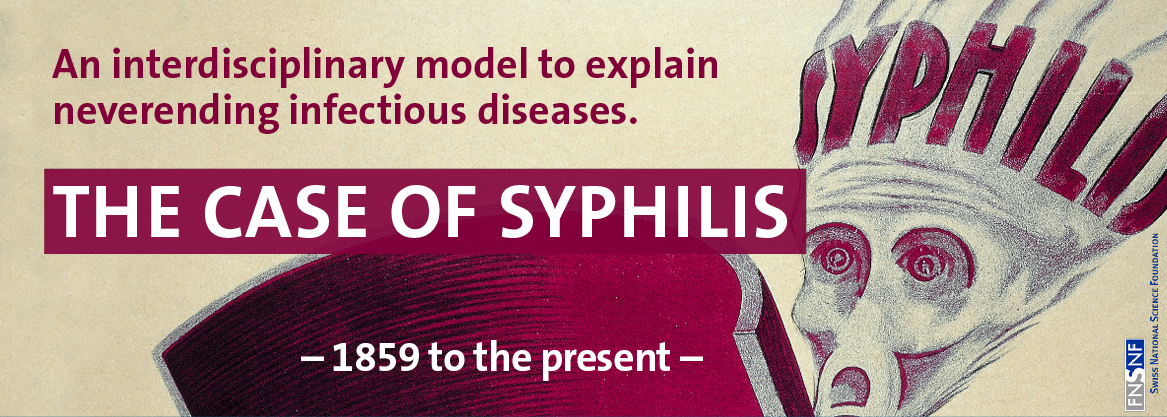[1023] Persistent infectious skin disease, the case of syphilis

The skin is a very special organ for the clinician. Direct access allows an early clinical and laboratory diagnosis, and skin tissue samples provide a facilitated pathophysiological approach. One of the rich fields of dermatology is venereology. Bacterial sexually transmitted infections such as Chlamydia trachomatis, gonococcus, Mycoplasma sp, and syphilis infection (Treponema pallidum) spread worldwide. Among STI’s, HIV infection has particularly (re) highlighted the health challenges of these diseases. The case of syphilis perfectly illustrates the difficulty of controlling or even eradicating an infectious disease. Despite his miraculous treatment with penicillin in the 1950s, the infection is re-emerging today. The sinergia 2020-2024 national fund project “An interdisciplinary model to explain neverending infectious diseases. The case of syphilis (1859 to the present) ”was thus born. https://neverending.unige.ch.
Our group focuses on 3 biomedical projects chosen to demonstrate ignorances of this infection after 500 years of existence, its hidden sides and the complexity of the psychological mechanisms impacting on prevention:
The interpretation of the different serological tests is most often difficult because they are not very specific. And in severe forms such as neurosyphilis, there is no consensus definition for diagnosis. Detection of Treponema pallidum DNA by polymerase chain reaction (PCR) in CSF is not commonly used due to very low sensitivity. Similarly to neuroborreliosis, also a Spirochete infection, where the diagnosis has recently been based on the search for an intrathecal synthesis of specific antibodies against Borrelia burgdorferi, our study aims to assess the value of an intrathecal synthesis index measuring specific anti IgG -treponemes in the CSF for the diagnosis of neurosyphilis.
Congenital syphilis is most often suspected in children born to untreated or inadequately treated affected mothers during their pregnancy. About two thirds of infected children are born asymptomatic, the symptoms can be discovered until the age of 6 years. The eradication of congenital syphilis is one of the priorities of the World Health Organization. In Switzerland around 1 case is reported each year, but the surveillance system remains incomplete for information on pregnancies and monitoring of children. In collaboration with the Swiss Pediatric surveillance Unit, a more detailed Swiss register is under construction. A meta-analysis of the international situation will also be done.
The announcement of the diagnosis of syphilis, can upset a person’s intimacy. Because of the nature of its transmission, but also its representation as a major sexually transmitted disease long before AIDS, and its sometimes clinically hidden character, syphilis will affect sexual function. How are the psychological representations of syphilis in infected people in 2020? We propose to investigate the psycho-sexological aspect and therefore improve our quality of care for our patients and their partners.
Our research group is thus oriented towards the interaction of biomedical but also humanitarian disciplines. Other persistent, re-emerging or neglected infectious diseases should also be considered in this comprehensive approach, regardless of the mode of transmission.
